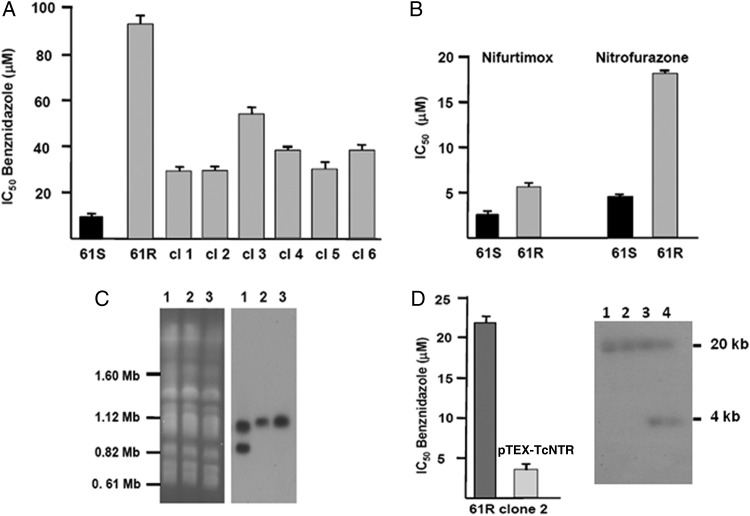Figure 1.
Properties of Trypanosoma cruzi clones derived by benznidazole selection. A Median inhibitory concentration (IC50) of benznidazole for resistant parasites (61R noncloned population and clones 1–6) and parental (61S) cells (Materials and Methods). B, The 61R cells are cross-resistant to the other nitroheterocycles nifurtimox and nitrofurazone. C, T. cruzi chromosomal DNA separated by contour-clamped homogenous field electrophoresis and hybridized with a TcNTR gene probe. Left panel, ethidium bromide–stained gel; right panel, autoradiograph of gel after Southern blotting. Lane 1, parental 61S; lane 2, 61R clone 3; lane 3, 61R (noncloned population). D, Reintroduction of an active copy of TcNTR into benznidazole-resistant parasites (61R clone 2), using the pTEX vector reverses the drug-resistance phenotype. Growth inhibition data are the mean (±SD) of 3 experiments. An autoradiograph (right) shows BamHI-digested DNA from parental 61R clone 2 (lanes 1 and 2) and pTEX-TcNTR–transformed cells (lanes 3 and 4) hybridized with a TcNTR gene probe.

